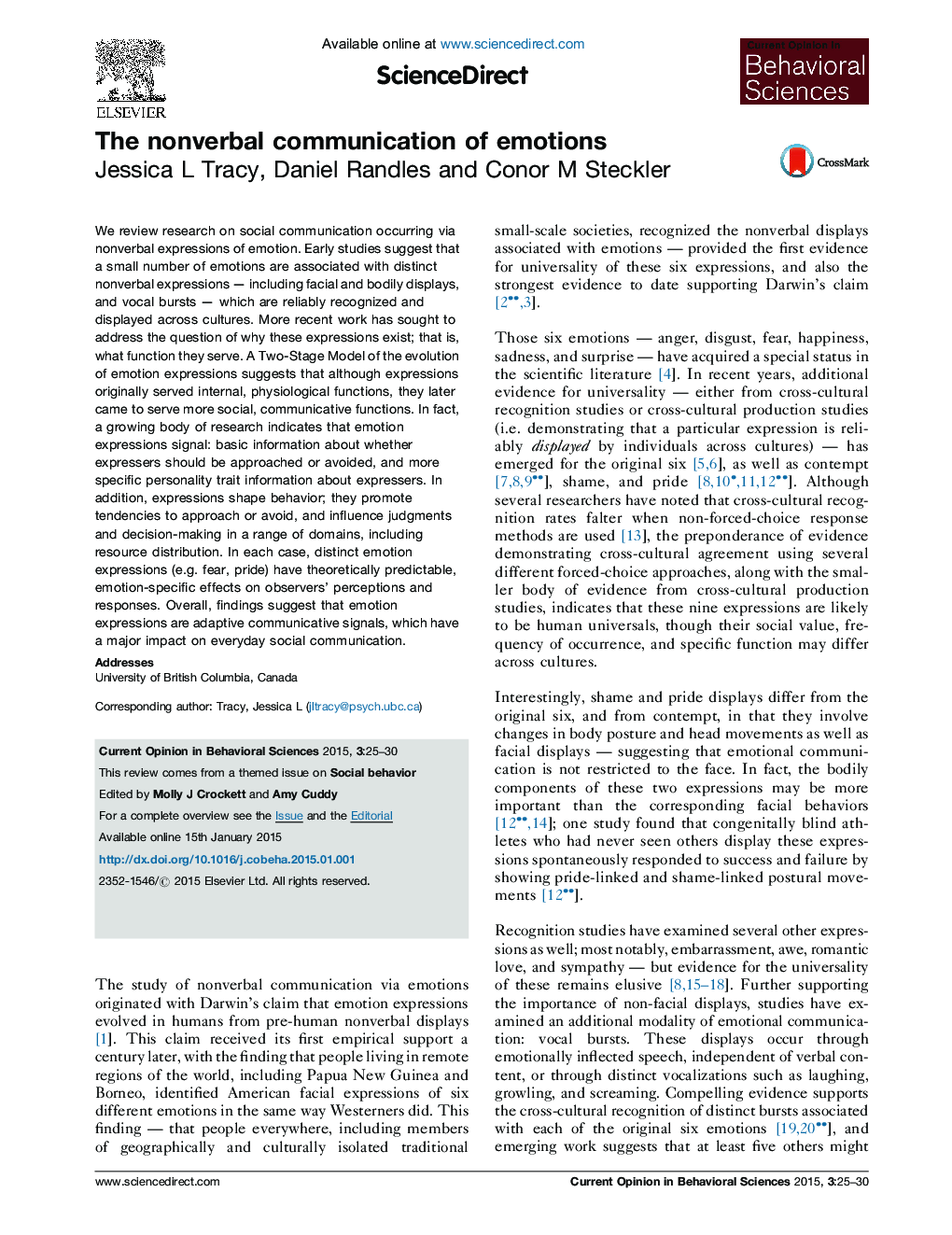| Article ID | Journal | Published Year | Pages | File Type |
|---|---|---|---|---|
| 4316379 | Current Opinion in Behavioral Sciences | 2015 | 6 Pages |
•Currently 9 emotions have received cross-cultural support as universal.•Recent work has emphasized the social function of emotion expression.•Emotion expressions play a key role in guiding human social interaction and behavior.
We review research on social communication occurring via nonverbal expressions of emotion. Early studies suggest that a small number of emotions are associated with distinct nonverbal expressions — including facial and bodily displays, and vocal bursts — which are reliably recognized and displayed across cultures. More recent work has sought to address the question of why these expressions exist; that is, what function they serve. A Two-Stage Model of the evolution of emotion expressions suggests that although expressions originally served internal, physiological functions, they later came to serve more social, communicative functions. In fact, a growing body of research indicates that emotion expressions signal: basic information about whether expressers should be approached or avoided, and more specific personality trait information about expressers. In addition, expressions shape behavior; they promote tendencies to approach or avoid, and influence judgments and decision-making in a range of domains, including resource distribution. In each case, distinct emotion expressions (e.g. fear, pride) have theoretically predictable, emotion-specific effects on observers’ perceptions and responses. Overall, findings suggest that emotion expressions are adaptive communicative signals, which have a major impact on everyday social communication.
